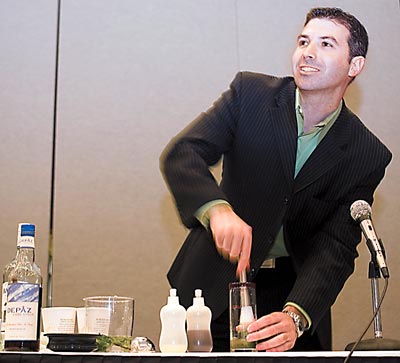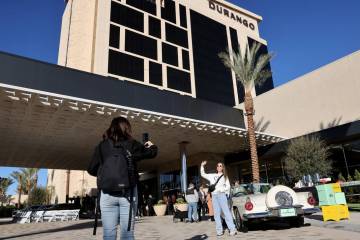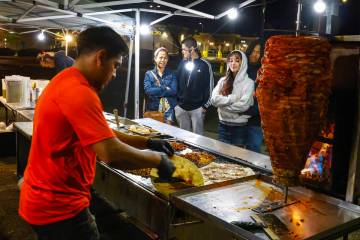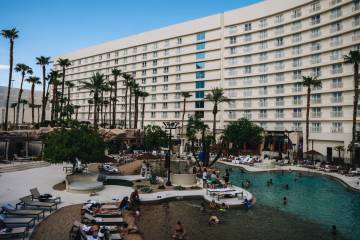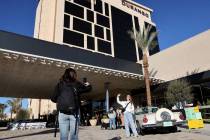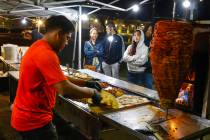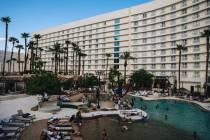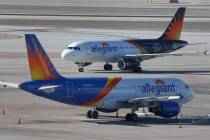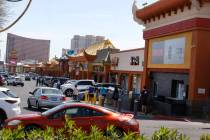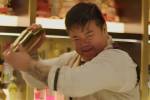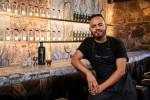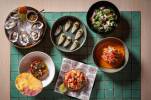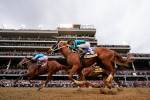SHAKE, STIR, SAVOR
It's a little after 10 a.m. and Drew Levinson is mixing a mojito -- presumably his first of the day.
Fermenting cocktail culture in a place where "glassware" includes plastic replicas of the Eiffel Tower and Red Bull energy drink is the most popular mixer in town requires an early start.
Even by noon, Levinson and four other self-styled "bar chefs" haven't nudged Las Vegas to the drinking world's top shelf with New York and London. But they've provided a glimpse at what it will take for the Sin City drinking scene to catch up with its culinary cousin in the sophistication department.
Better booze, nicer glassware and patience. Lots and lots of patience.
"It will happen, it is just a matter of time," said Levinson, who spoke Wednesday to a group of about 30 bartenders, bar owners and restaurant operators in a workshop at the Las Vegas Convention Center, part of International Hospitality Week. "One of these big casino operators has to take a bit of a plunge."
Levinson, beverage development specialist for the North Las Vegas-based distributor DeLuca Liquor & Wine, is looking to the neon city's epicurean epiphany, not the burgeoning nightclub scene, to take cocktail culture mainstream.
"They are going to draw from the fine dining, foodie customer," Levinson said. "Once it becomes popular, the nightclub crowd will follow."
Since 1992, when Spago opened in the Forum Shops at Caesars, dining has become a huge part of the Las Vegas experience. Tao Las Vegas at The Venetian was the top-grossing restaurant in America in 2006 with $55.3 million in food and beverage sales and 16 other Las Vegas restaurants were in the top 100.
The cocktail connoisseurs in Las Vegas this week said better boozing could drive even more revenue because drinks are more profitable than food. They said a typical restaurant has to generate twice as much revenue as a bar to make the same amount of profit.
Levinson said concoctions at off-Strip bars such as the Downtown Cocktail Room and Sidebar are a welcome change to a Las Vegas drinking scene that includes cheap beer in plastic footballs and frozen neon mixes in plastic cups so large tourists hang them from their necks with straps.
And he and the others trying to gin up more reverence for the art of the cocktail set out this week to prove fine drinking can work on the bigger scale of the Strip.
To illustrate, he used the mojito, a drink loved by customers but loathed by bar managers because it is allegedly too complicated to mix for a mass audience.
Levinson dropped some fresh mint leaves into a 14 ounce glass, squeezed in some lime juice and cane syrup, crushed the mixture with a muddler to release the mint oil, added ice, club soda and rum.
It took about 20 seconds and produced what the experts said was better for the bar and the customer.
"I can squeeze it fresh as fast as you can pour it from a bottle," Tony Abou-Ganim, who goes by the title Modern Mixologist, said in a follow-up demonstration with a lime. "Get rid of that neon-green sweet and sour mix you've been pouring out of a gun."
Abou-Ganim first tended bar in 1980. But he also had stints as an actor and a stock broker.
He returned to the bar business and wound up in Las Vegas in 1998 for the opening of Bellagio. It was his job to make the staff of about 200 bartenders think of themselves as cocktail craftspeople.
"Bartending at that time in Las Vegas wasn't really approached as a culinary art," Abou-Ganim said.
Abou-Ganim implemented a system at Bellagio that he still touts today as a model for instilling a cocktail culture.
The main ingredients are educated bartenders, fresh garnishes and hand-made mixers, premium booze and appropriately sized glassware.
"I don't think we have to supersize everything," said Bridget Albert, a bartender who worked at Bellagio for Abou-Ganim.
Albert has since earned the title mixologist for Southern Wine & Spirits of Illinois, located near Chicago.
"It is not so hard to get that first cocktail ordered," she told the audience. "But how do we get that second cocktail ordered?"
Smaller glassware gives customers, "the opportunity to enjoy more than one of your cocktails responsibly," she said.
The result is the difference between a refined cocktail culture and a continuing series of binge-drinking sessions, said Ryan Magarian, a former bartender, cocktail consultant and creator of Aviation Gin.
"Culture has depth, it has history, it has context," said Magarian, who advocates precise measurements, quality tools and learning the history behind the drinks at the bar. "We are here to change lives and our medium is cocktails."
Contact reporter Benjamin Spillman at bspillman@reviewjournal.com or (702) 477-3861.
BUILDING BLOCKS FOR GREAT COCKTAILS AT HOME Tools: • Boston shaker set; includes 26 ounce mixing tin, 16 ounce mixing glass, two strainers (Hawthorne and julep) and a twisted bar spoon • Quality hardwood muddler • Hand-held lime juicer • Manual or electric citrus juicer • Jigger for measuring Glassware:All glassware should be of high quality, meaning it feels good in hand and sounds good on contact.• 10 ounce old-fashioned glasses, good for spirits on the rocks, Old Fashioneds, whiskey sours • 12 ounce highball glasses, good for drinks with carbonated mixers like gin and tonic, rum and Coke • Collins glasses, taller than highball, good for Tom Collins, mojitos • 6 ounce or 7 ounce martini glasses • 6 ounce to 8 ounce rocks glasses, for drinking spirits neat (no ice) Basic booze to keep at the bar: • Vodka, should also keep a bottle of flavored vodka on hand • Gin • Bourbon • Light rum • Scotch, blended and single malt • 100 percent agave tequila • Cointreau The ice: For best results buy ice at the store. The best ice will be kept extremely cold and hard. Other basics: • Limes, oranges, lemons and grapefruit (store fruit at room temperature) • Pineapple, tomato, and cranberry juices in small cans • Small bottles of sweet and dry vermouth • 10 ounce bottles of ginger ale, club soda and tonic water • Cocktail onions • Spanish olives • Maraschino cherries Reference book: Mr. Boston: Official Bartender's and Party Guide



